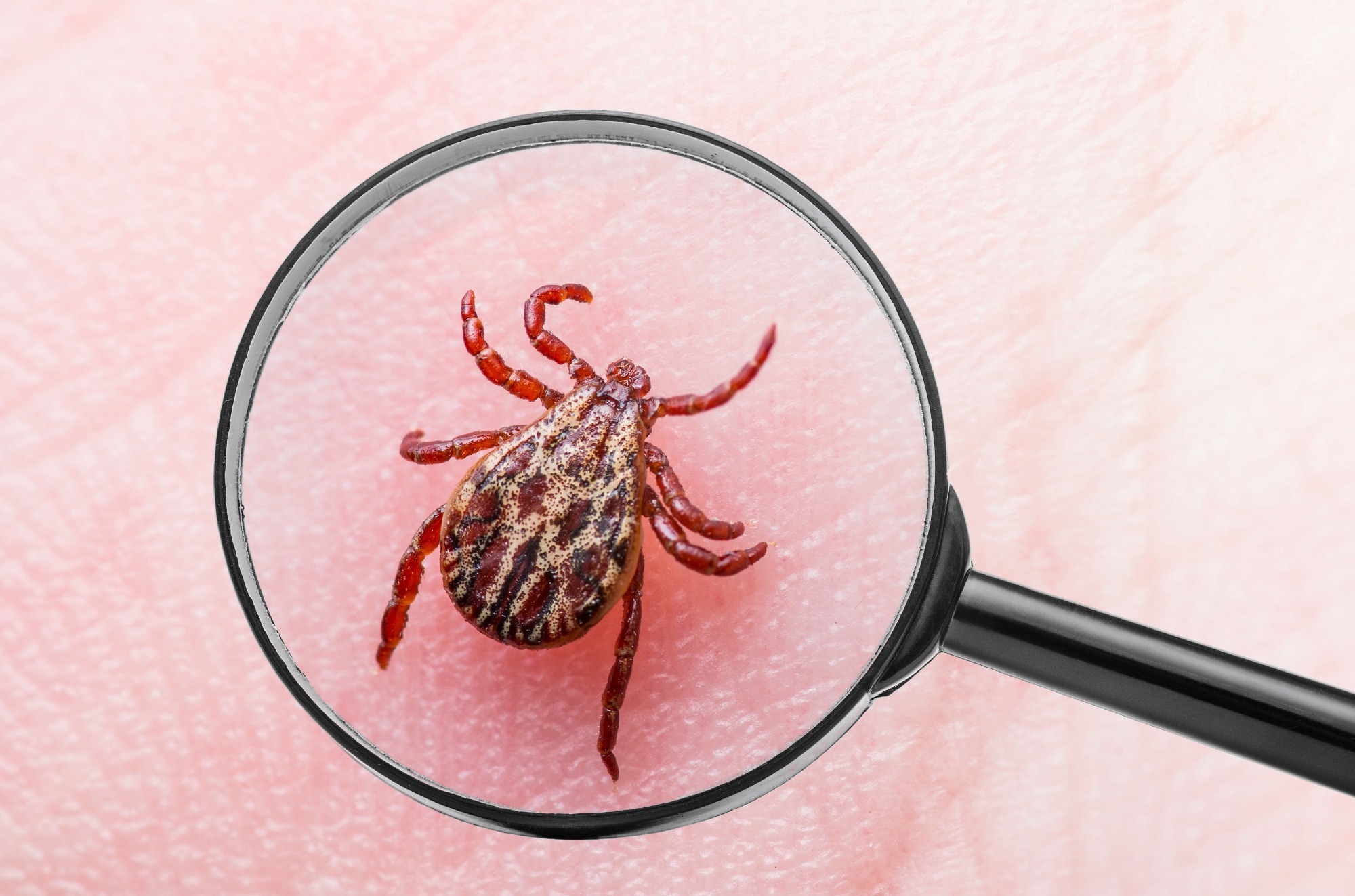Individuals who undergo treatment for Lyme borreliosis (LB) often report persistent symptoms; however, not much is known about the risk factors and etiology of these long-term effects after infection. A recent eBioMedicine study examines the determinants of symptom persistence following treatment for LB.
 Study: Determinants of persistent symptoms after treatment for Lyme borreliosis: a prospective observational cohort study. Image Credit: nechaevkon / Shutterstock.com
Study: Determinants of persistent symptoms after treatment for Lyme borreliosis: a prospective observational cohort study. Image Credit: nechaevkon / Shutterstock.com
Background
LB is an infectious disease caused by Borrelia burgdorferi sensu lato (s.l.). After completing treatment, some patients experience symptoms that can continue for extended periods ranging from months to even years. These persistent symptoms can include pain, cognitive impairment, and fatigue, which collectively are referred to as post-treatment Lyme disease syndrome (PTLDS).
Little is known about the pathogenesis or risk factors of PTLDS. Prior research has suggested the roles of certain patient characteristics such as age, sex, number of symptoms, and duration at the start of treatment. Some immunological hypotheses have also been proposed, such as co-infection with other pathogens or dysregulated immune responses.
Genetic variation, as well as cognitive-behavioral and psychosocial factors, could also influence the persistence of symptoms. The existence of a general post-infectious syndrome has also been proposed due to the persistence of symptoms after other infectious diseases, such as coronavirus disease 2019 (COVID-19) and Q-fever.
About the study
The present study analyzed a wide range of pre-defined possible determinants of PTLDS in patients, which included immunological, microbiological, genetic, functional, clinical, psychosocial, epidemiological, and cognitive-behavioral factors.
Between 2015 and 2018, 1,135 physician-confirmed LB patients were included in the study, with a follow-up period of one year. As a control, two reference cohorts were included, which comprised 4,000 and 2,405 individuals.
Association studies and multivariable prediction analyses were conducted to establish the determinants of symptom persistence. Patient data were collected from laboratory tests and online questionnaires.
Key findings
Crucial determinants of the persistence of symptoms included poorer social and physical functioning, higher anxiety and depression, and negative illness perceptions. Immunological, genetic, and microbiological factors specific to B. burgdorferi s.l. infection and clinical features linked to LB had limited predictive power. At baseline, cognitive impairment, fatigue, and pain were highly predictive.
The Brief Illness Perception Questionnaire (B-IPQ) and the Identity subscale reflected certain symptoms driven by LB. However, in the primary analyses, these questionnaires did not predict persistent symptoms.
In the cohort comprising individuals without LB, the Identity subscale could not predict persistent symptoms. Thus, the predictive power of these scales remained inconclusive.
The correlation between depression, anxiety, and persistent symptoms after LB demonstrates that psychological distress could be accompanied by persistent symptoms; however, it does not establish a direct relationship. In the reference cohorts, persistent symptoms were associated with comorbidity and impaired physical and social functioning, which is similar to the observation in the LB cohort, thus suggesting an infection-independent mechanism.
In line with previous studies, erythema migrans (EM) size, seropositivity, number of symptoms at baseline, and disseminated LB were not determining factors. Furthermore, no association was observed between other tick-borne diseases and persistent symptoms. LB symptom duration prior to the start of antibiotic treatment also had no predictive value.
The prevalence of sero-reversion was different between non-PTLDS and PTLDS patients. This finding was not in accordance with prior research. These differences could be due to various sources, such as differences in statistical methods, study design, definition and number of determinants, cohort sizes, population differences, and case definitions.
Conclusions
The determinants of PTLDS were often generic and included baseline symptom severities, baseline functioning, and comorbidities. In most of the LB cohort, symptom persistence could not be attributed to infection by B. burgdorferi s.l.
In a subset of patients, potential genetic factors were predicted. Furthermore, cognitive-behavioral factors were found to influence the persistence of symptoms. In the future, additional research is needed to elucidate the underlying mechanisms of persistent symptoms post-treatment for LB.
One limitation of the current study was that the results were based on self-reported symptoms, which could have led to a bias. Additionally, the determinants were pre-determined; therefore, there is the possibility of an omitted variable bias.
Another limitation of the study is that the association between persistent symptoms and determinants remains unclear. Finally, contrary to the formal PTLDS criteria, the criteria for persistent symptoms excluded functional disability.
Journal reference:
- Vrijmoeth, D. H., Ursinus, J., Harms, M. G., et al. (2023) Determinants of persistent symptoms after treatment for Lyme borreliosis: a prospective observational cohort study. eBioMedicine. doi:10.1016/j.ebiom.2023.104825